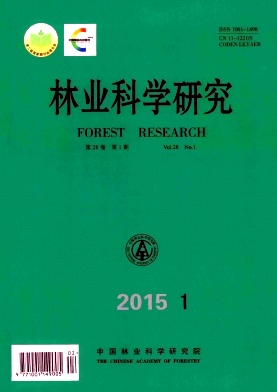|
[1]
|
张镱锂, 李炳元, 郑 度. 论青藏高原范围与面积[J]. 地理研究, 2002,1: 1-8.
|
|
[2]
|
莫申国, 张百平, 程维明, 等. 青藏高原的主要环境效应[J]. 地理科学进展, 2004, 2: 88-96.
|
|
[3]
|
Myers N, Mittermeier R A, Mittermeier C G, et al. Biodiversity hotspots for conservation priorities[J]. Nature, 2000, 403(6772): 853-8. |
|
[4]
|
Fang Z F, Zhao S D, Skvortsov A K. In: Wu Z Y, Raven P H eds. Flora of China (4)[M]. Beijing: Science Press and St.Louis: Missouri Botanical Garden Press, 1999. |
|
[5]
|
Lu Z, Wang Y, Peng Y, et al. Genetic diversity of Populus cathayana Rehd populations in southwestern china revealed by ISSR markers[J]. Plant Science, 2006, 170(2): 407-412. |
|
[6]
|
Wright J M, Bentzen P. Microsatellites: genetic markers for the future, In Carvalho G R, Pitcher T J, eds, Molecular genetics in fisheries[M]. London: Chapman & Hall Ltd., 1995, 117-121. |
|
[7]
|
Zane L, Bargelloni L, Patarnello T. Strategies for microsatellite isolation: a review[J]. Molecular ecology, 2002, 11(1): 1-16. |
|
[8]
|
Schrey A W, Heist E J. Microsatellite analysis of population structure in the shortfin mako (Isurus oxyrinchus)[J]. Canadian Journal of Fisheries and Aquatic Sciences, 2003, 60(6): 670-675. |
|
[9]
|
Rassmann K, Schltterer C, Tautz D. Isolation of simple-sequence loci for use in polymerase chain reaction-based DNA fingerprinting[J]. Electrophoresis, 1991, 12(2/3): 113-118. |
|
[10]
|
Subramanian S, Mishra R K, Singh L. Genome-wide analysis of microsatellite repeats in humans: their abundance and density in specific genomic regions[J]. Genome Biol, 2003, 4(2): R13. |
|
[11]
|
Brookes A J. The essence of SNPs[J]. Gene, 1999, 234(2): 177-186. |
|
[12]
|
Lewis R. SNPs as windows on evolution[J]. The Scientist, 2002, 16(1): 16-18. |
|
[13]
|
褚延广, 苏晓华. 单核苷酸多态性在林木中的研究进展[J]. 遗传, 2008(10): 1272-1278.
|
|
[14]
|
Grabherr M G, Haas B J, Yassour M, et al. Full-length transcriptome assembly from RNA-Seq data without a reference genome[J]. Nat Biotech, 2011, 29(7): 644-652. |
|
[15]
|
Li R, Li Y, Fang X, et al. SNP detection for massively parallel whole-genome resequencing[J]. Genome research, 2009, 19(6): 1124-1132. |
|
[16]
|
Li S, Yin T. Map and analysis of microsatellites in the genome of Populus: the first sequenced perennial plant[J]. Sci China C Life Sci, 2007, 50(5): 690-9. |
|
[17]
|
Tuskan G A, Difazio S, Jansson S, et al. The genome of black cottonwood, Populus trichocarpa (Torr. & Gray)[J]. Science, 2006, 313(5793): 1596-1604. |
|
[18]
|
Wright J, Bentzen P, Microsatellites: genetic markers for the future[M]//Carvalha G, Pitcher T. Molecular Genetics in Fisheries. Netherlands:Springer,1995. |
|
[19]
|
Tuskan G A, Gunter L E, Yang Z K, et al. Characterization of microsatellites revealed by genomic sequencing of Populus trichocarpa[J]. Canadian Journal of Forest Research, 2004, 34(1): 85-93. |
|
[20]
|
Kumpatla S P, Mukhopadhyay S. Mining and survey of simple sequence repeats in expressed sequence tags of dicotyledonous species[J]. Genome, 2005, 48(6): 985-98. |
|
[21]
|
Varshney R K, Thiel T, Stein N, et al. In silico analysis on frequency and distribution of microsatellites in ESTs of some cereal species[J]. Cell Mol Biol Lett, 2002, 7(2a): 537-46. |
|
[22]
|
Amarasinghe V, Carlson J E. The development of microsatellite DNA markers for genetic analysis in Douglas-fir[J].Canadian Journal of Forest Research, 2002, 32(11): 1904-1915. |
|
[23]
|
温 强, 徐林初, 江香梅,等.基于454测序的油茶DNA序列微卫星观察与分析[J].林业科学, 2013(08): 43-50.
|
|
[24]
|
Gao L, Tang J, Li H, et al. Analysis of microsatellites in major crops assessed by computational and experimental approaches[J].Molecular Breeding, 2003, 12(3): 245-261. |
|
[25]
|
吴 玲, 付凤玲, 李晚忱,等.利用生物信息学方法进行基于表达序列标签的玉米单核苷酸多态性标记的开发[J].核农学报, 2010(05): 968-972+1019.
|
|
[26]
|
赵春霞, 石先哲, 吕 申,等.人类基因组的单核苷酸多态性及其研究进展[J].色谱, 2003(02): 110-114.
|
|
[27]
|
Garg K, Green P, Nickerson D A. Identification of candidate coding region single nucleotide polymorphisms in 165 human genes using assembled expressed sequence tags[J]. Genome Res, 1999, 9(11): 1087-92. |
|
[28]
|
Nianjun L, Liang C, Shuang W, et al. Comparison of single-nucleotide polymorphisms and microsatellites in inference of population structure[J]. BMC Genetics, 2005, 6(Suppl+1). |
|
[29]
|
Simic D, Ledencan T, Jambrovic A, et al. SNP and SSR marker analysis and mapping of a maize population[J]. Genetika, 2009, 41(3): 237-246. |
|
[30]
|
Jones E S, Sullivan H, Bhattramakki D, et al. A comparison of simple sequence repeat and single nucleotide polymorphism marker technologies for the genotypic analysis of maize ( Zea mays L.)[J]. Theoretical and Applied Genetics, 2007, 115(3): 361-371. |





 DownLoad:
DownLoad: